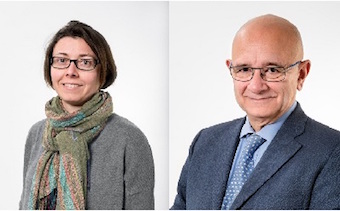
The Age and Physical Exercise Research Group of the Universitat de València and the Health Research Institute INCLIVA have compared in mice, and in terms of fragility, the sedentary and the active lifestyle. The results show that the physical exercise postpones in a very significant way the appearance of this syndrome linked to age. This study, published in the Journal of Gerontology, aims at developing interventions in animals with a potential transfer into the clinic practice.
The fragility is a geriatric syndrome of great clinic importance which affects approximately the 15% of the people who is older than 65. It is characterised by a vulnerability which causes the increase of the risk of suffering disability, mortality, bad quality of life in general when the patient is exposed to stress situations.
María del Carmen Gómez Cabrera, who is tenured university professor of the Department of Physiology of the Universitat de València and member of Age and Physical Exercise Research Group, explains that in the study they have developed a fragility test in animals. This is the Valencia Score, which is, in turn, based on the Fried Criteria, the most used method in the clinical practice to know the degree of this condition.
‘Our method measures the weight loss, the fatigue, the slowness when walking, the muscular weakness and the physical inactivity. We realise these measurements, in terms of fragility, in mice throughout their life comparing two groups: one with a sedentary lifestyle and another with an active lifestyle (voluntary physical exercise). The results on the animal model show that the physical exercise postpones in a very significant way the appearance of fragility’, has highlighted Gómez Cabrera.
According to José Viña, full university professor of Physiology in the Universitat de València and Director of the Age and Physical Exercise Research Group, ‘fragility is a syndrome not only preventable but also reversible’. In that way, the expert explains that in a recent clinical trial developed in collaboration with Francisco José Tarazona from the Hospital de la Ribera, ‘we have proved that a physical exercise programme is able to revert the fragility in humans’.
In this study with 100 fragile patients, the half of them realised a multicomponent physical exercise programme 5 days per week during 6 months. The programme not only did it revert the fragility but it also improved the cognitive, emotional and social parameters. It also reduced in a significant way the number of times that the patients go to the primary health care centre. ‘The planned, personalised physical exercise controlled by experts is a tool with an enormous potential when it comes to deal with fragility’, concludes José Viña.
Research Group
The Age and Physical Exercise Research Group focus its researches on ageing and free radicals, diseases associated to ageing, such as the Alzheimers´s disease, metabolic disorders during ageing and the fragility linked to it. Moreover, he investigates the specific genes which express the hundred-year-old people and its regulation through diet and exercise. In 2003, the Valencian Research Group has lead the creation of the Spanish Group for the Study of the Hundred-year-old people.
Articles:
https://www.ncbi.nlm.nih.gov/pubmed/28329258
https://www.ncbi.nlm.nih.gov/pubmed/26947059
Grup de Recerca en Envelliment i Exercici-FRESHAGE de la Universitat: http://ir.uv.es/t2oBscb
INCLIVA: http://ir.uv.es/6FUDnm0
Last update: 27 de april de 2017 13:27.
News release


















